
by Cody Harrison
It’s no secret that a young horse must learn to balance under the rider—but how we help them find that balance can make all the difference. The key is guiding them without overwhelming them.
First, remember that a young horse is not only learning to balance but also learning an entirely new form of communication. Expecting them to understand advanced cues too soon is like speaking to a toddler with adult vocabulary—it leads to confusion and frustration.
We must accept that communication will be limited at first and allow room for mistakes. Many riders focus too soon on achieving straightness, bend, or collection in an effort to get the horse off the forehand. But horses are naturally built to carry more weight on the forehand—80% of the time, that’s exactly where they are. The real issue arises when we trap them in small circles or repetitive exercises, especially if they’re not ready for it.
If a young horse doesn’t yet understand the aids—can’t move off the inside leg, doesn’t follow the feel of the reins, or falls in or out on turns—what’s the solution?
We start by riding forward. Horses are flight animals, built to move. Forward movement gives them a sense of freedom and helps activate the hind legs. That impulsion naturally encourages straightness and allows the horse to reach forward and down with the neck to find balance. Give them time to find their own balance. Balance, suppleness, and mental relaxation are things that can not be forced; they can only be allowed to happen.
Once this begins to develop, the horse will seek a soft, steady contact with the bit. It’s vital that the horse reaches for the contact—not that the rider takes it. Prematurely shortening the reins often causes the horse to brace, lift the head, and contract the neck, leading to sore backs, poor engagement, and loss of balance.
Only after establishing a soft contact can we begin to influence the horse’s posture and balance more meaningfully. Start with large, flowing turns. Avoid asking for collection or precision before the horse is physically and mentally ready—this process takes years, not weeks.
Take your time, but don’t waste it. From day one, ride your horse from back to front and let that be your guiding principle. When they’re ready to give more, they will offer it.
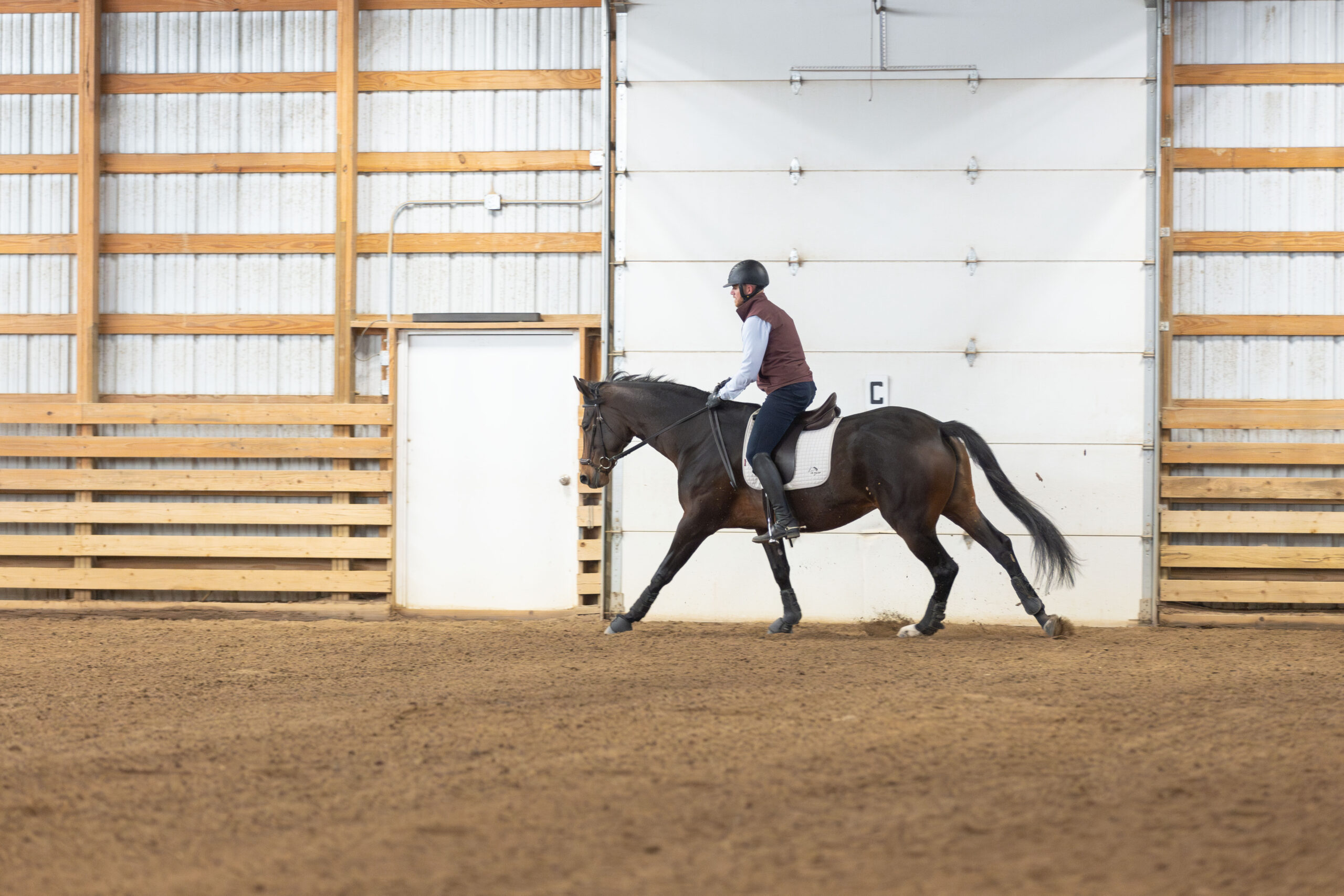

by Carrie Harrison
Part 2: The Horse’s Development – Why Maintenance Matters
Horse training isn’t a one-and-done process. Without consistent support and proper schooling, even a well-educated horse will begin to lose precision, strength, and clarity in their work. Muscles weaken, bad habits creep in, and the horse’s confidence can erode if they’re unsure of what’s being asked.
A trained horse needs ongoing education to stay at their level—and a developing horse needs even more support to get there. Horses don’t generalize well; a skill taught in one context must be reinforced in many others before it becomes reliable. And they’re always changing—physically and mentally. What worked last month may need adjusting today.
Examples of how horses can regress without guidance:
- A horse previously soft in the bridle may begin bracing if the rider’s hands become unsteady or inconsistent.
- A once-forward horse may lose motivation or develop sourness if exercises become repetitive or confusing.
- A young horse in development can become defensive or shut down if asked too much too soon, or without clear leadership.
Being in a structured program keeps the horse engaged, fit, and mentally balanced. Regular check-ins with a trainer ensure small issues are addressed before they become bigger problems. It also helps the rider better understand their horse’s needs and build a consistent communication system.
Most importantly, training is about longevity. A horse that’s physically fit and mentally confident will stay sounder and happier longer. Whether you’re working toward competition or simply want a trustworthy trail companion, proper, ongoing training is a commitment to the horse’s well-being.

by Carrie Harrison
Part 1: The Rider’s Journey – Why Continued Support is Key to Progress
Riding is a skill that evolves over time, and like any discipline, progress depends on the quality of instruction and support along the way. For the average amateur rider, independent progress without a trainer is not only difficult—it can be counterproductive. Bad habits can develop quickly and become ingrained before a rider even realizes something is going wrong.
Even accomplished riders benefit from eyes on the ground. A trainer offers perspective, technical corrections, and a roadmap for development. Without that, many riders plateau or even regress, especially when working through challenges like fear, body awareness issues, or communication breakdowns with their horse.
For example:
- A rider struggling with balance may not notice they lean slightly to one side—something a trainer can spot and correct quickly.
- Riders who have confidence issues may find themselves backing off or avoiding certain exercises, limiting their growth unless encouraged and guided.
- Miscommunication with the horse often stems from unclear aids or inconsistent timing—both of which a trainer can help refine.
Additionally, regular lessons build accountability and consistency. Riders in a program tend to ride more frequently, set goals, and stay focused. It also creates a safe space to ask questions, troubleshoot issues, and celebrate wins—big or small.
In short, a rider’s progress isn’t just about saddle time. It’s about quality time, with the right guidance. A committed trainer helps riders unlock their potential, avoid setbacks, and enjoy a more fulfilling partnership with their horse.

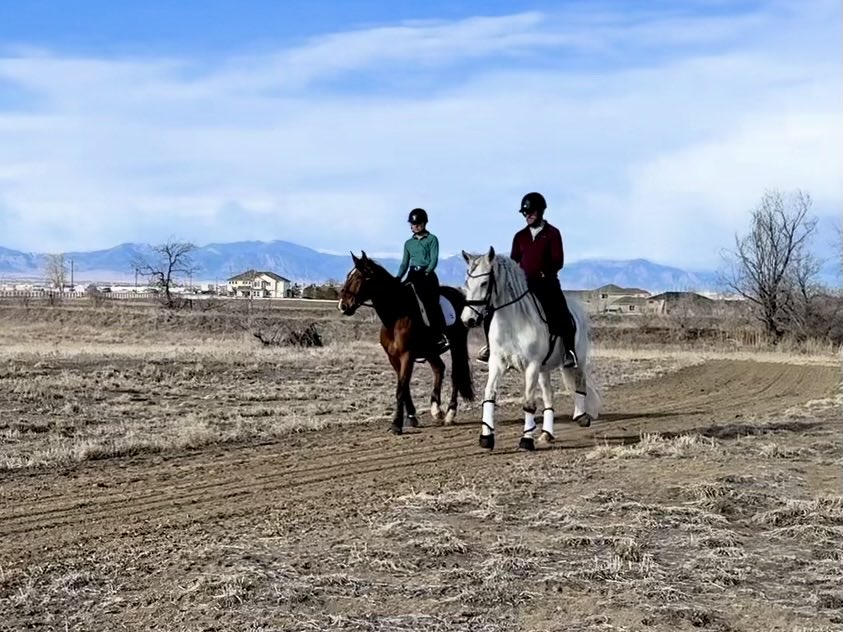
by Cody Harrison
For young or unconfident horses, stepping into the world beyond the safety of their home environment can be overwhelming. Hacking out, new locations, and even just being asked to ride out alone can be significant challenges. This is where a buddy horse comes in—a seasoned, confident companion who helps provide security and guidance for the inexperienced horse. However, while a buddy horse is a valuable tool, there comes a time when the young or timid horse must gain independence.
Let’s explore the role of a buddy horse, how it fosters confidence, and when it’s time to take the training wheels off and encourage solo experiences.
The Purpose of a Buddy Horse
A buddy horse serves multiple roles when introducing an inexperienced or anxious horse to new situations.
- Emotional Support and Confidence Boosting
Horses are herd animals that find comfort in numbers. A buddy horse acts as a stabilizing presence, helping the unconfident horse feel secure in unfamiliar environments. Having a calm, experienced partner reassures the green horse that everything is safe, reducing anxiety and minimizing the risk of dangerous reactions like bolting, spinning, or freezing.
- Teaching by Example
A seasoned buddy horse models good behavior. A confident horse demonstrates the correct responses, whether it’s calmly crossing a creek, standing quietly while the rider adjusts gear, handling wildlife encounters, or busy show environments with composure. The inexperienced horse learns by observation, often mirroring the more experienced horse’s behavior. Similar to a mare and foal in the field.
- Encouraging Forward Movement
A hesitant horse might balk at unfamiliar obstacles, hesitate at water crossings, or refuse to leave familiar surroundings. A buddy horse can lead the way, providing encouragement. Instead of forcing an anxious horse through an obstacle, the buddy horse can naturally show that there’s nothing to fear.
- Reducing Rider Anxiety
A nervous rider can unintentionally feed anxiety into an already uncertain horse. When a young horse is paired with a steady buddy, the rider can focus on giving clear, positive signals rather than worrying about unpredictable behavior. The more composed and confident the rider feels, the better the horse will respond.
When to Start Building Independence
While a buddy horse is an excellent tool, the goal is to develop a horse that can confidently handle new situations on its own. The key is recognizing when the young horse is ready for more independence and gradually pushing their comfort zone.
Here are signs that indicate it’s time to start weaning a horse off the buddy system:
- The Horse Maintains Relaxation and Forward Movement
If the young horse is consistently relaxed and responsive, even when momentarily separated from the buddy, they may be ready for more solo exposure.
- The Horse Checks In with the Rider, Not Just the Buddy
A horse that remains tuned into its rider rather than solely relying on the presence of a buddy is a good sign of growing independence.
- Less Herd-Bound Behavior
If the horse no longer panics when the buddy moves away, lags behind, or steps ahead, it’s a sign they’re gaining confidence.
- Consistent Positive Experiences
The horse has successfully navigated multiple rides or outings with minimal hesitation, showing they’re learning to trust the process.
How to Transition Away from a Buddy Horse
Building confidence is a process, and it’s important not to rush it. Here’s how to gradually phase out the buddy horse without creating unnecessary stress for the young or anxious horse.
- Increase Distance Gradually
Start by having the buddy horse walk a few strides ahead or behind. Over time, increase this distance. Allow the young horse to lead or traverse on their own before rejoining the buddy.
- Introduce Short Solo Outings
Once the horse is comfortable maintaining confidence with some distance from the buddy, try short solo rides in a familiar environment before attempting longer solo trails.
- Use a Ground Person Instead of a Buddy Horse
If the horse struggles with complete separation, a handler on the ground can walk alongside or slightly ahead, providing reassurance while still encouraging independence.
- Pick the Right Locations
First, transition to solo rides in calm and familiar areas. Avoid highly stimulating environments or unpredictable terrain until the horse gains more confidence.
- Stay Relaxed and Positive
Don’t immediately return to full dependency on the buddy horse if the horse struggles. Instead, offer reassurance and keep pushing small steps forward while maintaining a positive, patient approach.
Conclusion
A buddy horse is an invaluable asset when developing a confident, well-rounded trail horse. They provide security, guidance, and a positive learning experience. However, the ultimate goal is for the young or unconfident horse to trust its rider and handle new situations with composure.
By gradually increasing independence, recognizing the right time to push for more self-sufficiency, and setting the horse up for success, you’ll help shape a confident equine partner who can take on the world—one step at a time.
It is also okay to always have a buddy horse go with you on outings. It is always safe, and it is also nice to have good company for yourself.

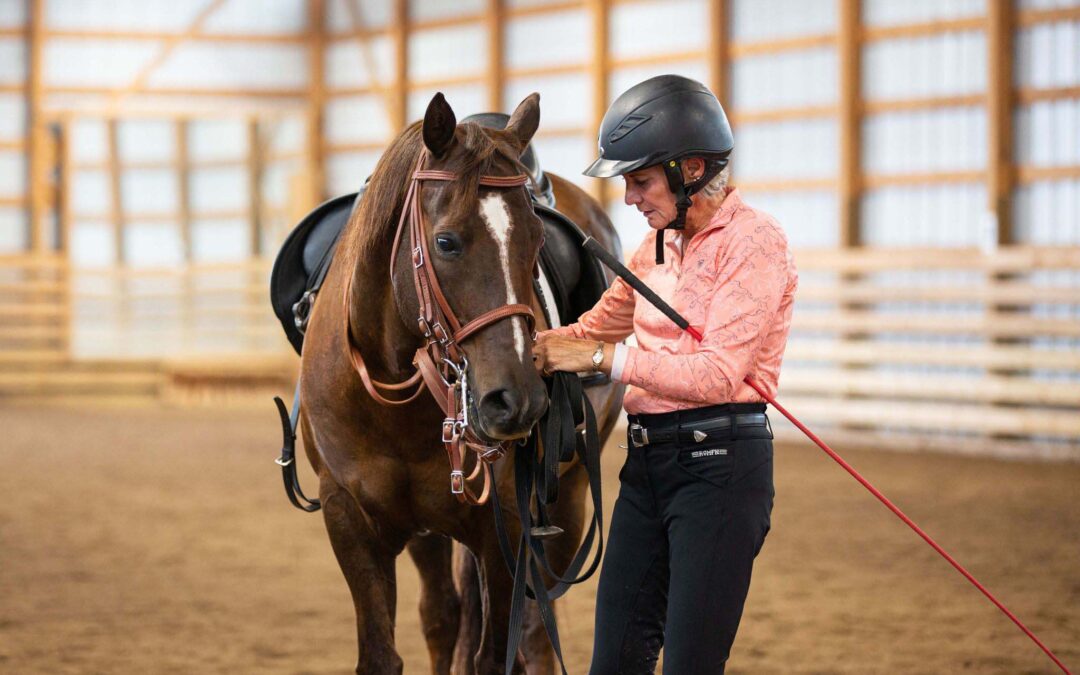
by Cody Harrison
Many people want to get the most out of every riding lesson and improve every lesson. While these are grand ambitions, to accomplish them, you will need to understand the many different ways to achieve them.
We first have to understand what improvement means with our horses. Simply doing better with the movements they are working on every day is not possible. A horse’s body takes time to adjust, build strength, and be in balance. This can sometimes take months for seemingly simple things. So, let’s look at some things we can improve regularly with our horses.
Things to improve on:
All the movements      Relationship              Balance
Strength              Conditioning               Problem Solving
Your understanding     The horse’s understanding   Lightness
Confidence            Technique                Learning about your horse
Patience              Knowledge                Feel
Timing               Communication            Trust
Many more things can be added to this list, and as long as one is attempted to be improved, you have improved.
An improvement can be that you were able to keep your horse in the same place as yesterday, allowing your horse to condition their body as needed and develop muscle memory for you and your horse. Waiting for the right time is difficult for many riders.
You can still have improvement with a “bad ride.” You may have learned something about your horse; you may have learned something about yourself. Perhaps you learned how to solve a particular problem. When problems arise and we have a bad day, we need to look at it like a puzzle and try to figure it out. Try not to stress about it; take your time, break it down, and enjoy the process of helping your horse. Some problems take more than just a single ride to solve.
One of the most important things to remember about your riding lessons is that you will figure out most of what you learn in a lesson after the lesson when riding on your own. Just because something may not have made sense during the lesson does not mean it was a waste. Some concepts are more complex to grasp than others. Sometimes, we need the quietness of riding alone to get a feel for them – a time when you do not have to listen to anyone but your horse. A time that you can truly focus. Other times, you may have nailed it in the lesson, and when you tried it on your own without the assistance of your instructor, it did not work. Now is the time when you really learn how to do it! When practicing on your own, in a quiet arena, making mistake after mistake. You know you fully understand it when you get it on your own.
How you view success is critical and can drastically affect your quality of life. I like to remind myself of Thomas Edison, who, when asked by a reporter about his invention of the lightbulb, replied, “What was it like to fail 1,000 times?” Edison replied, “I did not fail 1,000 times; it was an invention of 1,000 steps.”
Remember, there are always steps to take to reach your goals. To achieve your goal of piaffe or a flying change, you do not simply start trying to do them. Years of work are required to develop the horse so it can physically do the maneuvers easily and with mental and physical relaxation. You are, in fact, working on piaffe and flying changes by doing shoulder-in, perfecting circles, and doing tempo changes. Understanding how what you do today connects to future training is important.
No matter how your ride goes, please do your best to leave your horse in a place where they can be successful tomorrow.
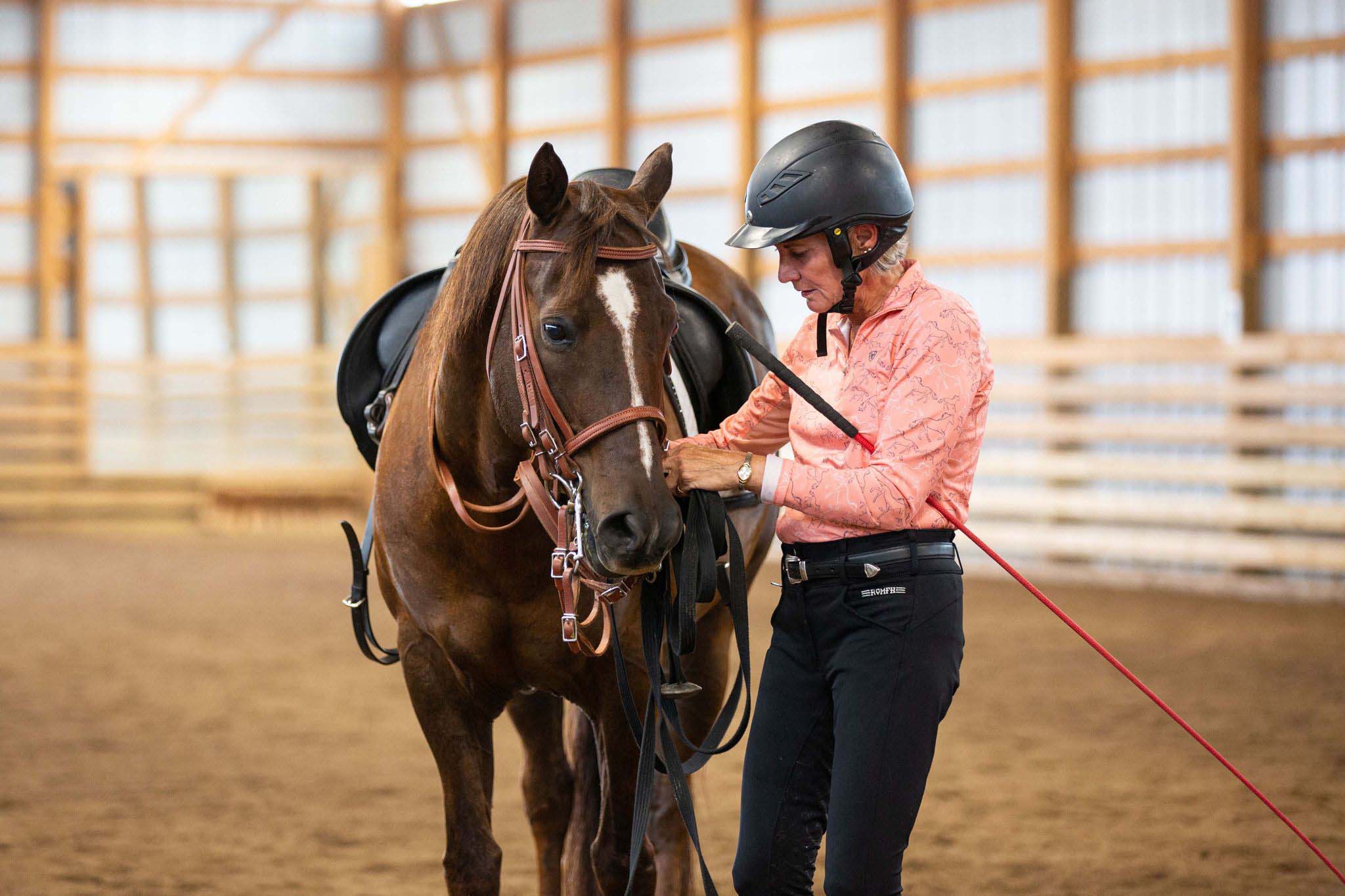
Student Jo B. with her horse Levi

by Cody Harrison
In today’s world of technology, we have access to a vast amount of information online. This includes social media platforms and online courses that cover nearly every topic. However, with so much information available, a person can have difficulty deciding what they want, or it can be too easy to change to another way of doing things. One of the biggest challenges people face when learning online is the lack of guidance. This often leads to riders attempting things that are beyond their abilities or their horse’s comfort levels, causing them to plateau or even regress in their development.
You will eventually find something you cannot relate to with your horse online. Your horse may respond differently than the horse online; even though the trainer might talk about how another horse may respond, covering every scenario is impossible. There are times as a trainer when what we think needs to happen based on what we see might change once we come in contact with the horse.
Even in virtual training sessions, we can still miss subtle things since we are not there to be able to feel the horse and its environment. Very few people will ever achieve more than mediocre success with online training. Online training should only be used as a means of support to in-person training.
Online training has become popular because it is convenient and cheaper. However, it is rare to find anyone who has achieved great success in their industry by taking the easy and convenient route. Most successful people have put in countless hours of hard work and made significant sacrifices.Â
There is nothing that can replace in-person training. Coaching in person with an instructor allows for every sense to be used and, therefore, offers many more options for learning and correction. In personal coaching, the instructor can see, feel, hear, and touch. It is impossible, or at least nearly impossible, to turn riding into an art with online training as your primary way of education.
To truly learn equestrian art, more than weekly lessons are needed. In-person coaching with an instructor is essential. You have to spend significant time with another equestrian artist farther along than you. You will soon realize that to be an artist in the equestrian world, practice alone is not enough. It is a lifestyle that must be adapted. A person must accept the time that it takes to master a craft and actively pursue the work that is required to achieve it.
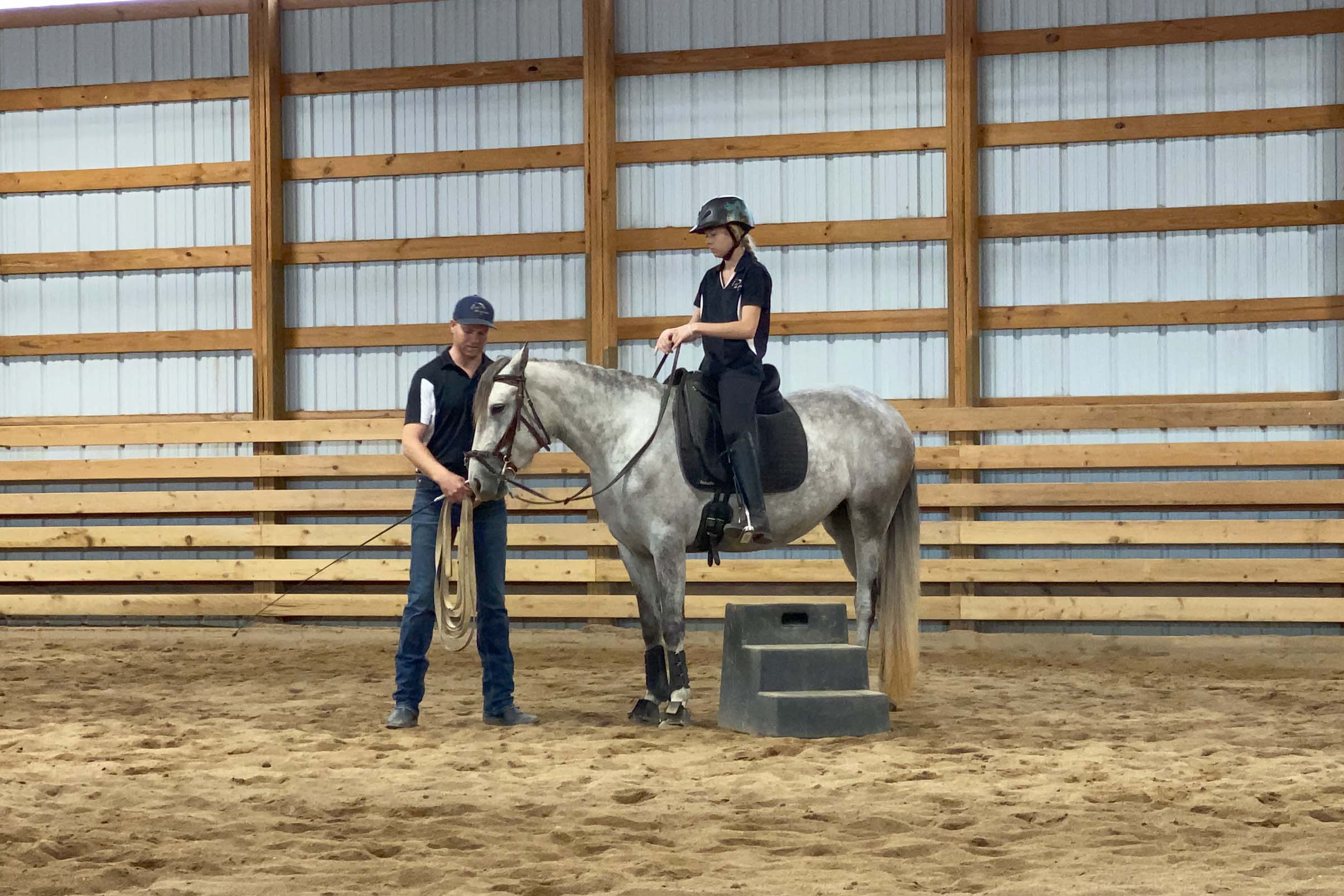
Student Kate L. with her horse Nena











